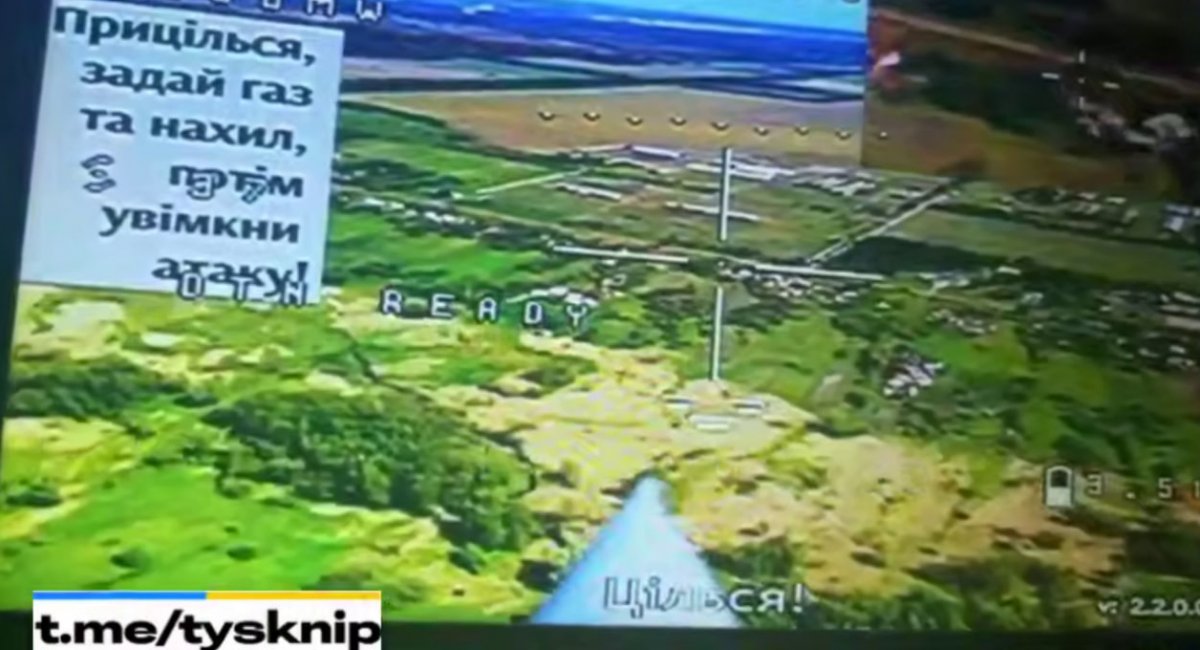**Ukraine’s Drones Bypass Russian Jamming with Autonomous Strike Capability**
A recent video footage, intercepted by Russian forces, has revealed the advanced capabilities of Ukraine’s FPV kamikaze drones. The video, published by NIP Tysk Telegram channel, shows how these drones use smart terminal guidance systems to automatically engage targets, even when their signal is disrupted.
This innovative technology has become a defining feature of the Russo-Ukrainian war. Unmanned vehicles, operating in the air, on land, and at sea, play a crucial role in the conflict. As both sides advance their technologies, anti-drone electronic warfare is rapidly evolving as well. The use of fiber-optic guided drones has been a popular option to evade jamming entirely. However, these FPV kamikaze drones may now be a cheaper alternative for Ukraine.
**How Ukrainian Drones Use Smart Guidance**
The intercepted video footage shows the sequence of how a drone with a target confirmation system functions under battlefield conditions. The drone enters RXLOSS mode multiple times early in the footage, indicating moments where the communication link between the aircraft and operator was blocked or degraded. This is often due to electronic warfare interference.
At the 46-second mark, the screen displays RCSMOOTHING, a function that supports stabilization of operator control inputs. At 56 seconds, the interface presents a menu with guidance prompts and a status message indicating that the drone is awaiting target confirmation. By 1:02, the drone locks on to a target, and the on-screen message changes from “Aim” to “Attacking.” The drone then autonomously flies toward the locked point, initiating a strike without further input from the operator.
**Alternative to Fiber-Optic Drones in EW-Hot Conditions**
Defense Express notes that these FPV drones equipped with confirmation and guidance systems are emerging as an alternative to fiber-optic-controlled drones, particularly in environments saturated with electronic warfare. Unlike fiber-optic drones, which become inoperable if their cable is cut, these drones can operate wirelessly and carry heavier payloads. Their ability to continue a strike mission after signal degradation gives them tactical resilience, especially during the final approach to a target.
However, the system also has limitations. It still requires manual piloting to reach a viable launch point before autonomous engagement can begin. If the drone loses connection too early, the mission may fail before the auto-strike phase can activate. Additionally, as Defense Express reports, the system currently lacks the ability to precisely target specific weak points on vehicles or fortifications.
**Implications of Autonomous Drone Warfare**
The use of autonomous drone warfare has significant implications for modern conflict. These FPV kamikaze drones demonstrate how technology can be used to bypass traditional electronic warfare defenses. As both sides continue to advance their technologies, it’s likely that we will see more sophisticated and lethal unmanned systems in the future.
For Ukraine, these drones may prove to be a game-changer on the battlefield. Their ability to operate autonomously and engage targets even when jammed gives them a tactical advantage. However, for Russia, this technology represents a significant challenge. As they struggle to keep up with Ukrainian innovations, it’s clear that the war in Ukraine is becoming increasingly complex and deadly.
Read More @ euromaidanpress.com












